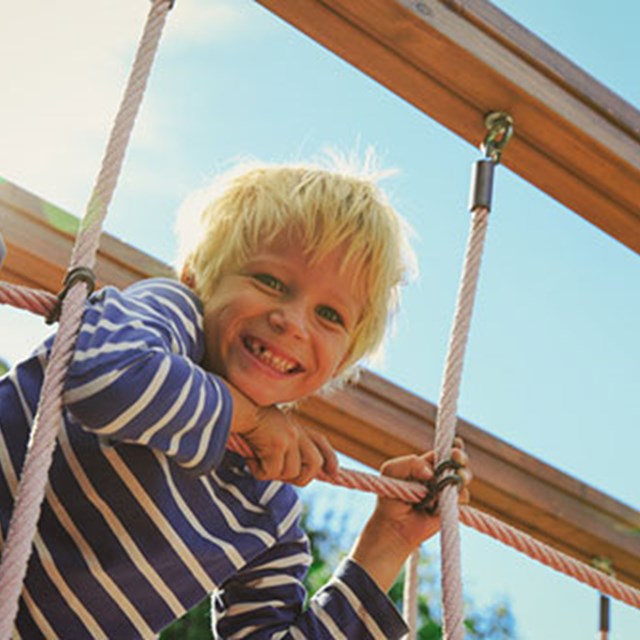
Though children love to play outdoors, they are more vulnerable than adults to the effects of heat and sun. The heat of the South Carolina sunshine can put children at risk of sunburn, dehydration, or even heat exhaustion and heatstroke. Keep little ones safe this spring and summer with these precautions and tips.
Protection from the Sun
People have some built-in sun protection in the form of melanin. Melanin, also called pigment, is a substance in the body that gives skin and hair its natural color. It also provides protection from the sun. Babies less than six months of age don’t have enough melanin to protect them and need to be kept away from direct sunlight. Even older infants should be kept away from direct sun especially between 11am and 3pm when the sun is at its peak. Use the UV Index forecast to know when the sun will be strongest.
Weather forecasts frequently include UV Index Scale ratings for the day. The UV Index is the forecast of the amount of UV radiation expected to reach the surface of the earth when the sun is strongest. UV radiation damages the skin and causes sunburns. A UV Index forecast of 6 or higher means there’s a high risk of harm from unprotected sun exposure.
Playground safety
Children should be protected from the sun’s rays when they go outside to play. If play equipment has not been shaded from the sun, it can get hot enough to cause severe burns to children’s skin, even on a 75 degree day. Before allowing children to play on equipment, check the temperature of equipment surfaces, including slides and swings, by placing your hand on the equipment. Children’s skin is more sensitive than adults’, so if it feels hot to you, it may be too hot for a child’s bare skin.
Ground surfaces may also heat up. Check the temperature of asphalt or sand before allowing children to sit or play on the surfaces. Children should wear appropriate clothing when playing, including shoes to avoid burning the bottoms of their feet.
Prevent dehydration
Babies and children can become dehydrated quickly, so they need plenty of fluids before, during and after exposure to heat to stay hydrated. If you’re breastfeeding, your child may want to breastfeed more often. If your child is six months or older, you should regularly offer cooled water.
If your child is out in the heat:
- Cover the play area with a sunshade or a parasol.
- Offer fluids regularly.
- Dress children in a protective sunhat with a wide brim or a long flap at the back that will cover their head and neck.
- Apply sunscreen with a sun protection factor (SPF) of at least 15 that protects against both UVA and UVB rays.
- Reapply sunscreen regularly, especially if children are playing in water.
- Dress children in lightweight, light-colored, and breathable fabrics, like cotton; consider whether UV protective clothing is a good choice.
- Check children’s diapers; dark urine can indicate dehydration.
- Never leave children in a parked car.
- Know your child care provider’s plan in the event your child becomes dehydrated, sunburned or suffers from heat or sun stroke.

